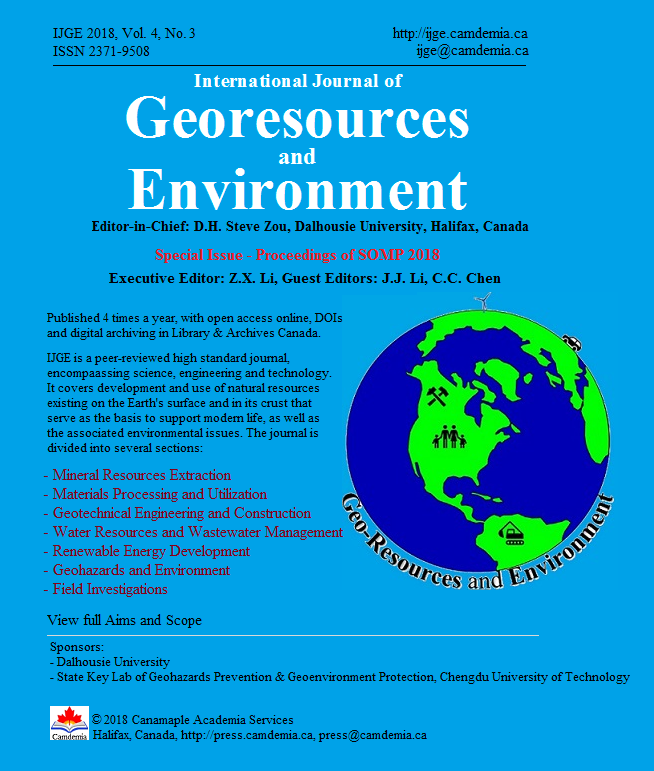Earth Resource Management, a New Graduate Degree at the University of Utah
DOI:
https://doi.org/10.15273/ijge.2018.03.010Keywords:
natural resources, management, human factors, cultureAbstract
Earth‘s resources can be considered in three categories: captured or reusable—sun, wind, rain, tides, etc.; nurtured or renewable—ecosystems, including soils, plants, animals, etc.; and extracted—mineral deposits, including oil and gas. All three types of resources are used by humans for sustenance and for improvement of the quality of life. Increasing human population and the continuing extraction of depletable resources may lead to shortages of key commodities, unbalanced markets with wide price swings, and economic depression in areas where those resources are depleted. In addition, some resources may be used or extracted without adequate consideration of the influence of that use on other resources. Until recently, all of the earth‘s resources were treated as infinite, and the use of those resources proceeded accordingly. In particular, mineral resources were often “high graded” with little thought of the resultant influences on other resources. For true sustainability, an integrated, holistic approach to resource usage must be developed and implemented. That approach will necessarily incorporate the knowledge and methods of the sciences, engineering, business, law, and humanities, and will include five important components: people, resources, innovation, cooperation, and leadership. At the University of Utah, the College of Mines and Earth Sciences is preparing to offer a master‘s degree in Earth Resource Management. This course of study will be one of the options in the accredited Professional Management of Science and Technology program, administered by the University‘s Graduate School. It is designed to prepare professionals competent in all of the aspects of sustainable resource management.Downloads
Published
Issue
Section
License
Copyright, Terms and Conditions
The International Journal of Geohazards and Environment (the Journal) is published by Canamaple Academia Services (the Publisher) online with open access, under a Creative Commons Attribution-Noncommercial license (CC-BY-NC) (http://creativecommons.org/licenses/by-nc/4.0/). Authors (the Authors) submitting papers (the Work) for publication in the Journal automatically agree to the following terms and conditions.
1. Under the license (CC-BY-NC), Authors give permission for others to share and reuse the Work, as long as the original source and author(s) are properly cited (i.e. a complete bibliographic citation and link to the Journal website) and the material is not used for commercial purposes. Any sharing or reuse must however indicate the original CC-BY-NC license terms of the work.
2. Authors transfer and assign to the Publisher all copyright in and to the Work. However Authors retain all proprietary rights except the copyright, related to the Work and also retain the rights a) to use, reproduce, distribute, and publicly display the Work in any medium in connection with the Authors‘ academic and professional activities, such as teaching, presentations and lectures, b) to create derivative works from the Work and to make full use of the Work in future research and publications, c) to authorize others to make any non-commercial use of the Work, d) to make both the pre-published and final-published versions available online in institutional and/or disciplinary repositories or on their own websites with a citation and link to the original paper published in the Journal.
3. Authors warrant that the Work is their original work, it is not copied from anywhere or anyone else, they are totally responsible for the authenticity, originality, validity and accuracy, and the facts and views are their own, that the Work contains no matter which is defamatory or infringes any literary or proprietary rights, intellectual property rights, or any rights of privacy, and that the Work has not been simultaneously submitted to any other journals or publishers. Authors further agree that their manuscripts whether accepted or rejected will not be returned and the rejected manuscripts will be disposed at the journal editor's discretion.
Disclaimer: The Publisher, the Journal and the editors accept no responsibility for statements or opinions expressed by authors. Use of information and materials in the Journal is the sole responsibility of users.


